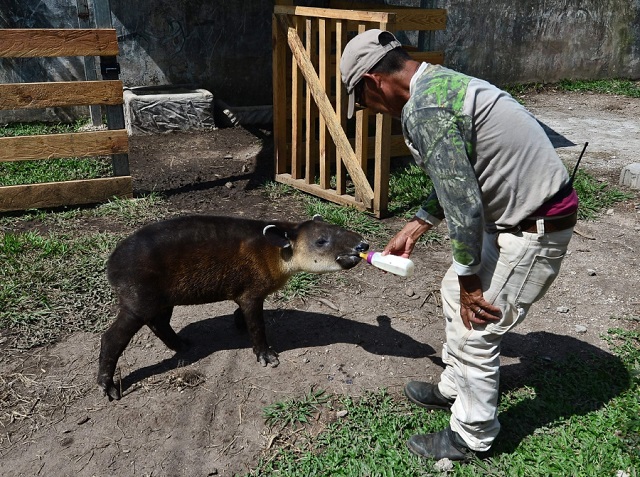
Now it forms part of a project to rescue the threatened Central American tapirs, which Honduras declared at risk of extinction in 2008, when their population had fallen to just 5,000 adults.
The species has been driven out of its natural habitat throughout Central America by deforestation, while its trusting, amiable nature makes it susceptible to hunters.
The conservation project aims to protect several other species as well in an area covering 220 hectares (540 acres) of forest and grasslands.
‘Pakistan’s endangered species more vulnerable than ever’
Almendra is one of 10 tapirs living in a 12-hectare natural area alongside a giraffe called Big Boy, two African lions, four Bengal tigers and four hippopotamuses.
Pumas, jaguars, camels, zebras, ostriches are among the 500 animals from 48 species that live there.
After its seizure from the Los Cachiros drug cartel - which used it for clandestine meetings - the park was entrusted in 2014 to the Noah's Ark company run by the vet Maria Diaz.
She told AFP her aim is to boost the number of tapirs - a slow-moving animal related to horses, donkeys, zebras and rhinoceroses but which looks more like pigs with a shiny black coat - with the eventual goal of a "controlled" release into the wild
There have already been six tapir births in the zoo, the latest of which was Almendra, who was born in December.
EU MPs, conservationists urge ban on trophy hunting of endangered species
Tapirs are the biggest native mammals to Central America and can weigh up to 600 kilograms (1,300 pounds). Their conservation is vital as they play an important role in the ecosystem by spreading seeds that grow into large trees, Diaz said.
Tapirs were declared extinct in El Salvador in 2016, and few remain in their native mountain habitats from Mexico to Colombia.
The species suffers from low birth rates since females don't mature sexually until they are two, while pregnancies last 14 months, experts say.









1732881519-0/Express-Tribune-(6)1732881519-0-270x192.webp)
1732874090-0/BeFunk_§_]__§-(1)1732874090-0.jpg)






COMMENTS
Comments are moderated and generally will be posted if they are on-topic and not abusive.
For more information, please see our Comments FAQ